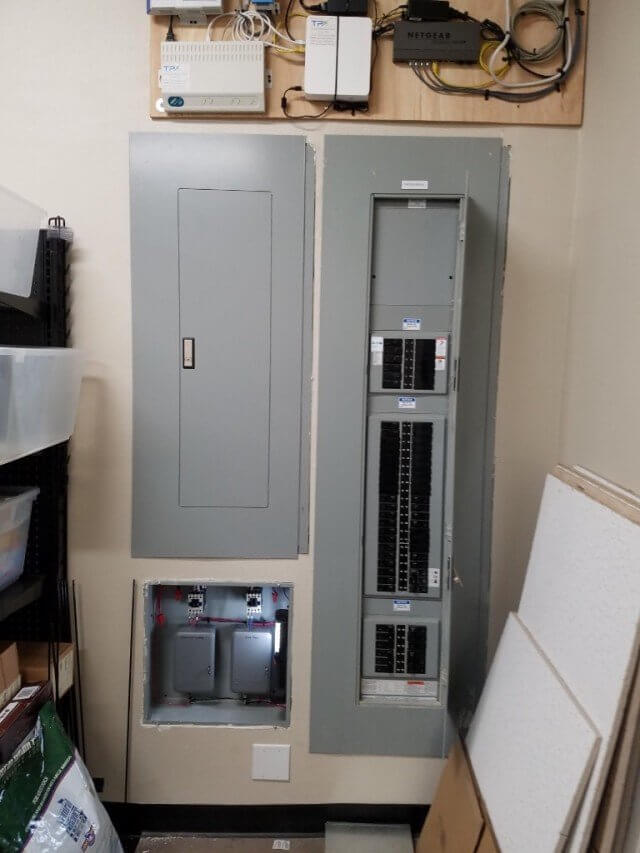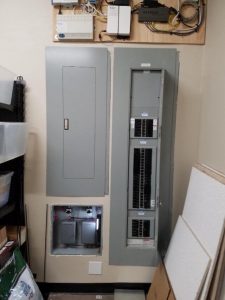

An electrical panel, also known as a breaker box, is the central hub of your home or business’s electrical system. It receives power from your utility company and distributes it to the various circuits in your property. Each circuit is protected by a circuit breaker, which is designed to trip and shut off power to the circuit in the event of an overload or short circuit.
There are several types of circuit breakers, including standard, GFCI (ground fault circuit interrupter), and AFCI (arc fault circuit interrupter). Standard circuit breakers are designed to protect against overloads and short circuits. GFCI breakers are specifically designed to protect against electrical shock by detecting imbalances in current flow. AFCI breakers are designed to protect against electrical fires by detecting dangerous arc faults.
It’s important to understand the amperage capacity of your electrical panel and individual circuits. The amperage rating of your panel is the maximum amount of electrical current that can safely flow through it. Most homes and businesses have a 100-amp or 200-amp electrical service, but this can vary based on the size and electrical demands of the property. Each circuit is also rated for a certain amperage, and the total amperage of all circuits should not exceed the amperage rating of the panel.
If you are experiencing electrical issues such as flickering lights, tripped breakers, or overheating electrical outlets, it may be time to have your electrical panel inspected by a professional. CLD Electric, a trusted electrical contractor in the San Diego area, can help diagnose and repair any electrical problems you may be experiencing.
Regular maintenance of your electrical panel is also important to ensure that it is functioning properly and safely. This can include tightening connections, cleaning the panel and circuit breakers, and checking for signs of wear or damage. It’s recommended to have your electrical panel inspected by a professional electrician at least once every 5-10 years, or more frequently if you are experiencing electrical issues.
Upgrading your electrical panel may also be necessary if you are adding new appliances or electrical devices to your property. Older panels may not have the capacity to handle the increased electrical demands of modern appliances and electronics. CLD Electric can help determine if an electrical panel upgrade is necessary and provide a professional installation to ensure that it is done safely and correctly.
In conclusion, understanding your electrical panel and circuit breakers is crucial for ensuring the safety and effectiveness of your electrical system. If you are experiencing any electrical issues or are in need of an inspection or upgrade, contact CLD Electric for professional and reliable service in the San Diego area. Regular maintenance and professional installation can provide peace of mind and protect your property from potential electrical hazards.
